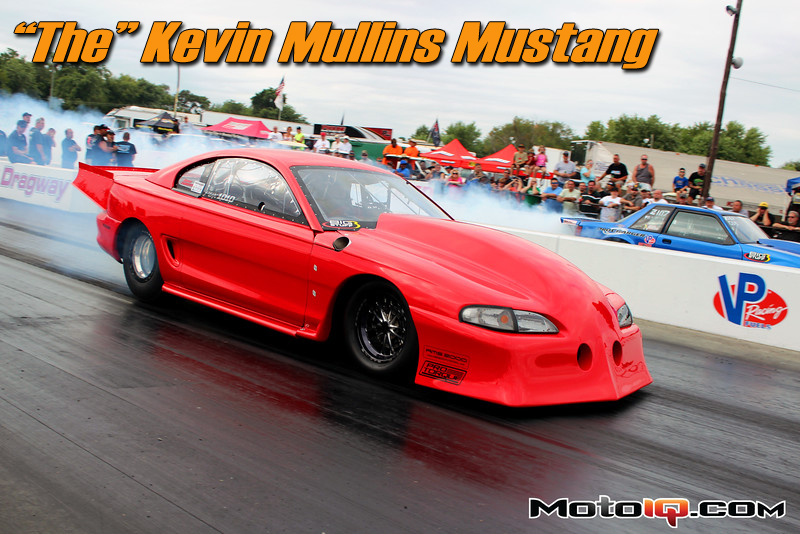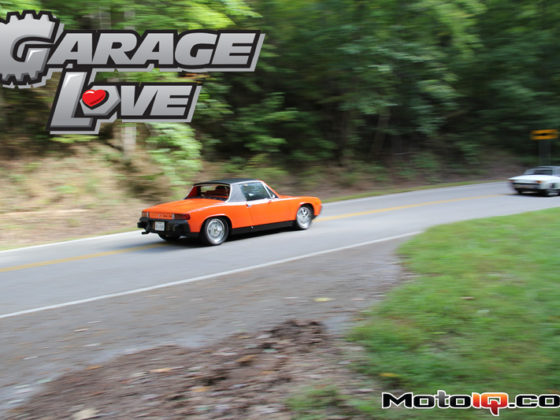,
 Racepak's V-Net uses a CAN-based bus and allows for a large variety of sensors to be easily and quickly plugged together. A Racepak V300SD datalogger keeps tabs on the many sensors that the Mustang carries. Just how many? “I have no idea,” says Mullins. Almost every possible vehicle parameter is logged, from turbine shaft speed, multiple wastegate pressures, EGT for each cylinder, a huge variety of shock and suspension parameters, to ride height, track and tire temperature and more!
Racepak's V-Net uses a CAN-based bus and allows for a large variety of sensors to be easily and quickly plugged together. A Racepak V300SD datalogger keeps tabs on the many sensors that the Mustang carries. Just how many? “I have no idea,” says Mullins. Almost every possible vehicle parameter is logged, from turbine shaft speed, multiple wastegate pressures, EGT for each cylinder, a huge variety of shock and suspension parameters, to ride height, track and tire temperature and more! The Racepak laser ride height sensor is visible in the foreground. In the background behind the jack stand, slightly out of focus, is the kevlar “engine diaper”. In case the motor lets go, the diaper does its best to keep all the bits off the track. Out of frame is a mounting point for a U-shaped assembly that would remind you of a factory bumper reinforcement. On the Mustang, however, it is used to strategically place ballast low and in front of the car. This ballast is used as a tuning tool to help keep the front end of the car planted.
The Racepak laser ride height sensor is visible in the foreground. In the background behind the jack stand, slightly out of focus, is the kevlar “engine diaper”. In case the motor lets go, the diaper does its best to keep all the bits off the track. Out of frame is a mounting point for a U-shaped assembly that would remind you of a factory bumper reinforcement. On the Mustang, however, it is used to strategically place ballast low and in front of the car. This ballast is used as a tuning tool to help keep the front end of the car planted. 2014 is the first year that Mullins and the team are running an “aero” nose. Most teams are running some kind of aero package that includes a deep valence to lower the overall front end height. The entirety of the front bodywork is all one-piece, and much of this unit is custom because the market is focused on either the Fox body or the 1999+ Mustangs. It is attached by many, many 1/4 turn fasteners – it takes a lot to keep the body attached at these speeds. Ride height and nose height are actually tuned for throughout the run, mostly by manipulating shock settings.
2014 is the first year that Mullins and the team are running an “aero” nose. Most teams are running some kind of aero package that includes a deep valence to lower the overall front end height. The entirety of the front bodywork is all one-piece, and much of this unit is custom because the market is focused on either the Fox body or the 1999+ Mustangs. It is attached by many, many 1/4 turn fasteners – it takes a lot to keep the body attached at these speeds. Ride height and nose height are actually tuned for throughout the run, mostly by manipulating shock settings. Since “straight” down the 1/8 mile is the primary job, the 25.0/4.5-15 Mickey Thompson skinnies up front are just that – skinny! And, since you only need to stop once, small single-piston Strange calipers hide underneath the Weld Racing wheels to turn insane speed into dust, sparks and heat.
Since “straight” down the 1/8 mile is the primary job, the 25.0/4.5-15 Mickey Thompson skinnies up front are just that – skinny! And, since you only need to stop once, small single-piston Strange calipers hide underneath the Weld Racing wheels to turn insane speed into dust, sparks and heat. Another view from the opposite side shows more of the attention to detail on the construction of this car. The oil tank for the dry sump and the overflow is integrated together, and clearanced for the front wheel. Another catch tank is in the rear of the car in case things get really crazy.
Another view from the opposite side shows more of the attention to detail on the construction of this car. The oil tank for the dry sump and the overflow is integrated together, and clearanced for the front wheel. Another catch tank is in the rear of the car in case things get really crazy.


